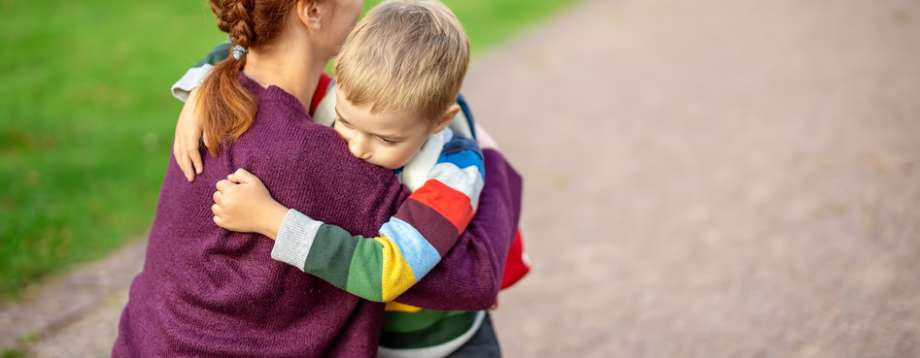The Texas School Shooting: Explaining Tragedy and School Shootings to Kids

When I saw the news about the school shooting at Robb Elementary School in Uvalde, Texas, I felt as though my heart had collapsed. There are no words to explain the cascade of emotions one feels reading about an elementary school shooting, especially when you have your own precious children in school.
Events like this shake up our hold on reality. They are scary and confusing for us, let alone our kids. You may be wondering whether you should talk to your children about the Texas shooting and what you should say if you do.
It may be best to shield young children from topics like mass shootings, but it is not always possible. Trying to avoid the topic or hide it from them when they are bound to find out may do more harm.
If and when our children hear about what happened on Tuesday night in this heavily Latino town close to San Antonio, it is important to be prepared to have a conversation with them that is both honest and reassuring.
Here are some tips for talking to your kids about the Uvalde School Shooting.
Process Your Own Emotions First
Before you can talk to your little one about the Texas school shooting or any other tragedy, do your own research and process your own emotions.
Your kids are reassured when you are calm and steady during scary times. Getting there is not easy. Let yourself feel the full range of emotions as you view the images taken by Dario Lopez-Mills in the aftermath of the tragedy.
Let yourself feel the rage, despair, and confusion about why Salvador Ramos would do this. Then, try to ground yourself. You do not have to accept this or figure it out, but you do need to be able to remain in control so that your children feel safe.
Bring Up The School Shooting
Your child is bound to hear about the Uvalde tragedy. Talking about it with them allows you to correct any misinformation they might have about the situation, and to reassure them. If your child is in fourth grade or older, assume that they will know something about what happened, and gently start the conversation yourself.
Begin by asking your child what they have heard. Listen without interrupting. Gently correct any misconceptions.
Encourage Kids to Ask Questions
The questions your kids have about this tragedy will help you understand their anxieties. Then you can reassure them in a way that makes them feel safer.
Explicitly prompt your child to ask their questions. Answer them both honestly and in an age-appropriate way.
Use Age-Appropriate Explanations
Remember that kids think concretely, especially young children. A 7-year-old really needs to hear you say that it won’t happen at their school. They can’t understand the difference between a slim possibility and a moderate possibility.
With a 9 or 10-year-old, you can be more straightforward and may be able to tell them explicitly that it is always a possibility, but that it is highly unlikely. Then you will need to follow up by telling them that if there was an active shooter, their teachers will protect them. If your child’s school is doing active shooter drills, you can explain that this is a way to keep them safe just in case.
Teenagers are mature enough to understand that there is always a chance that this could happen so preparation is a sad necessity. They would also benefit from a discussion about why school shootings happen and the different ways we can work as a society and with lawmakers to prevent them. They can also participate in discussions about mental health issues, gun control, and gun laws.
Younger kids should not delve into this type of conversation because they need to feel that the adults in their lives are taking all the necessary steps to prevent a mass shooting from happening at their school.
Stay Calm
As upsetting as these events are, you will do your children a service by remaining calm in your discussions. Try to answer questions matter-of-factly.
That does not mean that you cannot express to your child that this was a terrible tragedy which we cannot let happen again. But, your delivery does make all the difference.
Limit Media Exposure
Kids do not need to hear this news over and over, nor do they need to repeatedly view the horrific images of it or hear the traumatic sounds of gunshots.
Young children should have zero media exposure to topics such as mass shootings or gun violence. Turn off your TV or radio to protect them from added trauma and fear.
Limit media exposure for older kids and teens as well. It’s OK for them to watch the news, but don’t keep it on for long periods. This includes social media.
Explain that you are not trying to hide the realities of the Texas school shooting from them and that you will answer any questions they have. Let them know how damaging it can be to be bombarded by images of and sounds of a gunman and stories about gun violence in the associated press. Even repeatedly viewing images of families grieving outside the civic center might be too much for some kids.
Talk About “Safe” People
Unfortunately, we cannot necessarily take away all of the fear and anxiety associated with the news of a school shooting. At the end of the day, it can happen anywhere.
If your child is really struggling, psychologist Eileen Kennedy-Moore suggests asking your child to name people whose job it is to keep them safe.
Try setting up an activity with your child where you ask them to draw a picture of themselves. Then, together, draw stick figures of all of the people whose job it is to take care of them. This could include teachers, family, law enforcement officers, firemen, and more.
Middle school kids can do the same activity by writing names in bubbles. This visual offers some comfort to kids who are feeling vulnerable.
You Don’t Have to Have All the Answers
No one can completely comprehend or understand why school shootings happen or how to prevent them. If you cannot answer all of the questions your child asks you, it’s okay. Be honest while remaining in control of your own emotions if you don’t know the answer. In a calm voice, you can say something along the lines of, “I wish I knew why this happened, and I wish it never did happen.”
A Brief History of Gun Violence and School Shootings
Gun violence is on the rise in the United States. In 2020, the last year that we have the data for, over 45,000 people died from gun violence. That number is up 43% from the 2010 data.
Just 10 days before the Texas school shooting, 10 black people were killed at the grocery store in Buffalo, New York, in a racist mass shooting.
Mass shootings have become more and more common, especially since the 1990s.
- The deadliest school shooting was at Virginia Tech in 2007 when the gunman killed 32 people on a rampage.
- 28 people died in the Newtown shooting (also called the Sandy Hook shooting) in 2012 at Sandy Hook Elementary School.
- A school shooting left 17 people dead in 2018 in Parkland, Florida. This mass shooting happened at Marjory Stoneman Douglas High School, during a period of time when there was a lot of public support for gun control.
If you are struggling to find emotional support during this time, there are mental health charities and helplines that can help you and your child, such as Mental Health America and the Child Mind Institute.

